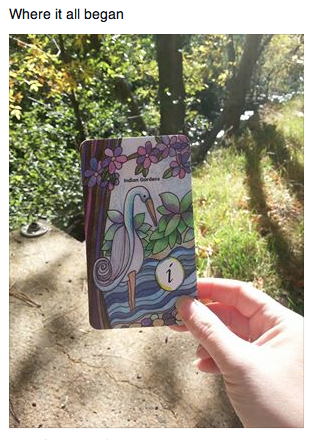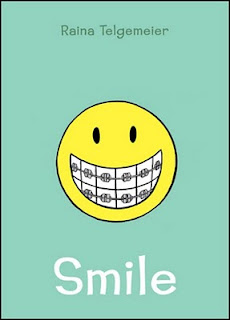The terms of the social contract in Dick and Jane’s world puts pressure on them to behave in certain ways. The constraints can make whatever they have to do to solve the story problem difficult, if not impossible. If Dick and Jane violate the social contract in their world, they pay a price for it.It is especially important in Fantasy and Science Fiction when writing about alternative worlds that you consider the demands social contracts impose on the people in them.
In writing historical novels, it is important to understand what the social contract of the time and place required. Morals and practices changed over time and across geography. Small desert tribes had a different social contract than societies in king-ruled Europe and those of hunter-gatherers in Africa.
Studies have suggested that groups of one-hundred or less are pretty good at self-regulation. There isn’t a need for organized law enforcement in such a small community because the members all know each other and are able to keep tabs on one another. If one of the members commits an act that is detrimental to the group, the other 99 are willing and able to correct or punish them. Even in a small community, there are rules that they follow to keep the peace.
It isn’t in the group’s best interest if they can’t trust one another. If someone is lying, stealing, killing, or lusting after someone else’s mate, conflict will ensue and the transgressor will be booted out. It is hard to survive in the world alone, especially if you suck at hunting or gathering.
In groups larger than one-hundred, it is imperative to have some form of social contract with rules that are enforceable and enforced. The golden rule of most societies can be boiled down into the loose statement: “Treat others the way you want to be treated.” This isn’t effective if you’re visiting a community of purple people eaters.
Ancient Egyptians had a long list of “I will not ...” statements in their Husia. Jews and Christians embraced commandments which included admonitions to not worship different gods or idols, to not lie or bear false witness against a neighbor, to not murder, commit adultery, steal, or covet their neighbor’s wife.
Hinduism’s rules of dharma encouraged patience, forgiveness, self control, honesty, sanctity, control of senses, reason, knowledge or learning, truthfulness, and absence of anger.
In your story world, your characters will be subject to the rules of their society's contract. If Dick breaks those rules, there will be consequences. He may fight to change the rules or reveal the dark side to one of his society’s rules.
It is considered a plot hole if you apply modern sensibilities to the people from a historic setting. That doesn’t mean you can’t take some artistic license. However, having Victorian girls behave like the cast from a modern reality TV show does not work for most readers, unless you are portraying an alternate universe in Science Fiction or adding a Fantasy twist.
Errors of this type will, at the very least, make the reader cringe. At worst, your book will go on the to-be-burned pile.
If you write fantasy or Science Fiction, develop your own ten commandments for your story world. How are they enforced? What are the consequences for breaking them? Are some infringements more serious than others? Are some ignored on a routine basis without consequence?
In The Hunger Games by Suzanne Collins, the citizens of District 12 aren’t supposed to hunt outside the fence, yet Gale and Katniss do so regularly. Because they transgress, Katniss is better prepared to survive the Hunger Games. Breaking the social contract benefitted her. Katniss and Peeta break the contract again at the end of their first Hunger Games by refusing to kill each other, which sets up the conflict for the second book in the series.
Think about your story. Have you directly or indirectly explored social contracts in your story world? Have you put it to work for you in terms of complicating your characters’ lives? Have you utilized transgressions and punishments?
For more information on crafting believable obstacles, pick up a copy of Story Building Blocks II: Crafting Believable Conflict in print or E-book version.
I want to frame this picture book and hang it on my wall. To label Teacup as having bucket-loads of appeal for audiences familiar with and sympathetic to displacement, migration, social disruption and family change strips away the myriad of other sophisticated, elegant qualities this book deserves to be described by. It is simply sublime. […]
This week’s theme is BELONGING.
Holidays can be tough.
We aren’t with loved ones who are far away, and we are with loved ones that may be emotionally far away or don’t understand us. I picked the I is for Indian Gardens card, which is all about belonging for this week.
How do we know where we are supposed to be? Here’s a fun exercise to do. Here’s two lists. One, is the feelings you have when you are where you belong, and the other where you probably don’t fit. Recall a time when you felt a great sense of belonging. I always think back to Drama Club in high school. Those were a fun bunch of kids. Then think of situations or scenarios which felt the opposite. This is your “template” you can go to when you are feeling out of sorts or rejected, and don’t know why.
Here’s my lists.
Bliss and Belonging List
They just see you and think you are kinda cool.
You are in flow.
You feel creative.
You feel expansive and hopeful.
You feel supported.
You feel like you can just be you and it’s enough. You can let go and relax.
All that you offer is more than enough.
They compliment you and you compliment them.

Where You Might Not Belong List
You feel like you need to jump up and down to be seen.*
You keep trying.
You feel like you have to give to get what you need.
You want to change yourself to belong.
You might feel shame.
You contract and feel less hopeful.
You don’t feel understood. You have to explain yourself.
This applies to your social circle, your work, your job and even using social media. If you are feeling you are invisible in certain social media, go where you are seen! It’s an awful, awful feeling when you hear the crickets sounding and nothing else in the room when you are offering a lot. That’s a sure sign you aren’t supposed to be there; that isn’t your audience. But you might find that certain things match one medium better than another. For instance, my posts for classes works great on my blog, but not always on Facebook, but I found a welcome home on Pinterest for them. My art digs being on Instagram and there’s lots of love there, but when I post on Facebook sometimes I feel ignored and then I slowly experience the second list.
Have fun making your lists today. This is a great tool to get you out of funk and back to where you belong.
*BIG indicator
————————————–
Healing Fairy Alphabet Deck available here, by the way



I got the best birthday present the other day. A precopy of Somerset Studio magazine.

What’s this? I had just submitted an essay a month or two ago and hadn’t heard a thing.

Holy cows! What a fabulous and important gift from the Universe/God/Angels. I am beyond thrilled and a great way to start the new year.
It’s available now – January 1st – at most Barnes and Noble’s and Michael’s shops. And yup, national magazine and one of my favorites! Hope you like it and especially, hope you like the message in the essay.


Raina Telgemeier's
Smile
is about big changes in a young girl's life. No, not those kinds of changes (although as a father to two girls I'll have my share of those awkward moments). We're talking instead about subtler changes, hinted at from the start by the book's cover, which features a brace-clad smiley face. From
Scholastic's Booktalk:
Aah, hanging out with your friends. You laugh. You go shopping. You have sleepovers and you always have fun. Well, imagine this: you and your friends are chasing each other one day and you trip. When you fall, you hit the cement. You hit the cement so hard that you knock out your two front teeth! This is exactly what happens to the character of Raina in the graphic novel Smile by Raina Telgemeier.
After an emergency trip to Dr. Golden's office, the dentist glues Raina's teeth back into her mouth. He covers them in gauze that soon becomes soggy and gross. When Raina takes off the gauze, she discovers that the teeth have been inserted too far. Now she looks like a vampire! Going to school looking like a vampire will definitely make boys notice her, but not in a good way.
While the book on its simplest level is the story of Raina's teeth trials, on a much larger level it's the story of a girl who struggles to maintain her own identity while still fitting in. One part I particularly love is when Raina comes to the realization that she has to move on from her former friends, who are acting less and less supportive, to a new circle of friends in high school. These transitions happen in real life, of course, but less often in middle school lit. Too often we're offered a much simpler, pat solution.
I love
Smile
0 Comments on
Big Changes as of 1/1/1900










